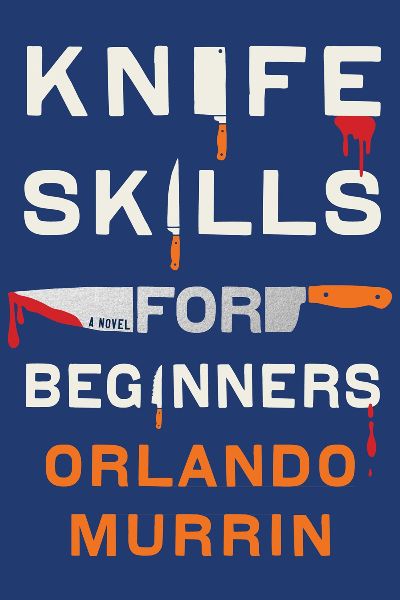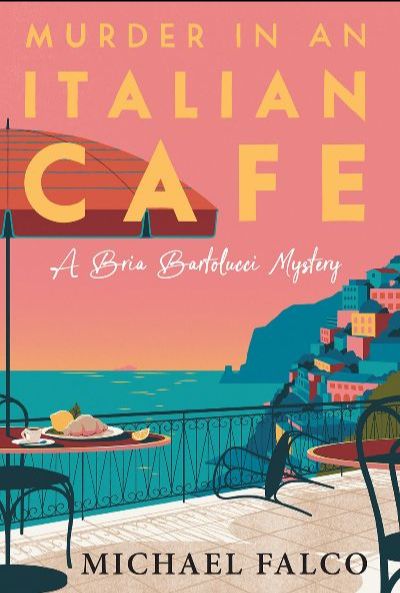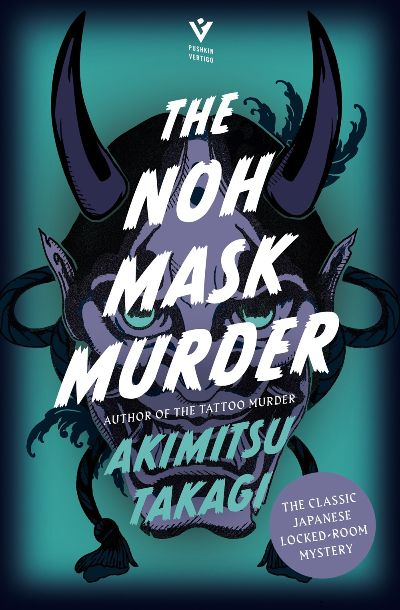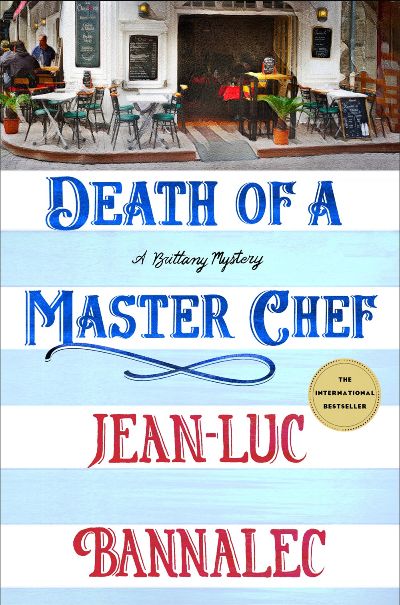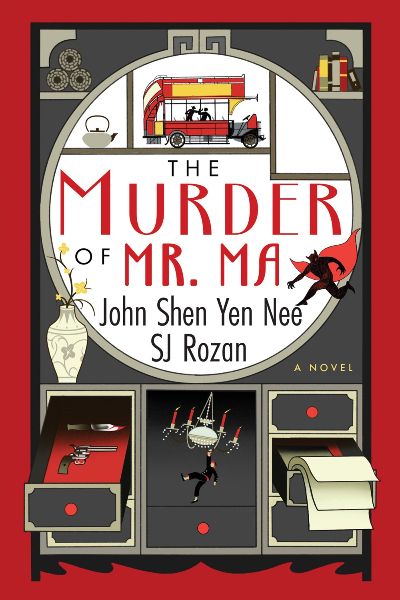The fourth in Gerhardsen’s best-selling Hammarbyeries reveals a horrible history in a Swedish town that on the surface seems to revolve around soccer games, poker nights, and kindness to those less fortunate. The first break in the idyll, and the opening of the book, is the shooting of Sven-Gunnar Erlandsson, a man whom everyone knows as a tireless soccer coach, helper of the homeless, and devoted father. If the investigators begin to think that maybe he’s a little too saintly, well, that’s probably just their long years encountering the worst of society. As the police look in ever-widening circles at the dead man’s family, friends, and acquaintances, it starts to seem like he might have been the only good person around, surrounded as he was by dark secrets that are slowly and shockingly revealed. (Even the last sentence drops in a twist.) Every character, including those who are missing for years, is given a fully rounded personality here, and it’s quite the large cast. Gerhardsen’s masterful plotting takes us around multiple metaphorical corners, possible killers, and surprise victims in her character- and emotion-driven saga. Maybe it’s time to get back into Scandi noir–and you don’t have to have read the previous books in the series to enjoy this one
International
Cooking as entertainment, from reality shows to competitions to documentaries, couldn’t be more popular, and Murrin’s decision to set Knife Skills in the heart of a London cooking school is a smart one. Located in an old mansion in the super-posh Belgravia neighborhood, the school—which is residential—offers week-long classes for small groups of a dozen or so. The students, a bit of an odd crew, are super excited at meeting their instructor Christian Wager—he’s sort of a Gordon Ramsay type. When Christian shows up, one arm in a cast, and announces that he’s passing the class on to his good buddy Paul Delamare, the class groans in disappointment. Paul isn’t a celebrity like Christian, but he’s a darn good chef, and slowly the class warms up to him. Until there’s a murder as gruesome as you can imagine (hint: cleaver) and the class rather ghoulishly wants to continue the course—corpse be damned!—and with Paul the number-one suspect. From here, the book spirals out—there are red herrings galore, and nearly everyone seems to be a suspect at one point or another. Lots of fun to be had, especially with the characters Murrin creates.
Marr’s thrillers have a knack for getting inside the minds and lives of modern women, and this one continues that run, here in the high-flying (and sometimes just high) world of celebrity PR. Addison Stern is a bitchy, ruthless PR star to the stars. She’ll do anything for her clients, including ruining junior media employees who might be naive enough to try to look beneath the surface of the stars’ fake tans and Botox. She’s vying for a partnership at her firm, and finding her pharma-bro client, Phinneas Redwood, dead is not what she needs, especially when that murder is followed by other crimes that all lead investigators to Addison. She never thought she’d see the day, but she partners with her private-detective ex, Connor Windell—he’s only too happy to leave a losing streak in Las Vegas—to get to the bottom of things and save herself. The two are off on a jet-setting investigation that takes them to Monaco and other more-money-than-sense places in search of the truth. The touch of Jackie Collins here–the ridiculous riches if not the steaminess—adds a deliciously over-the-top touch to a fast-moving, satisfying whodunit.
Michael Falco’s novels are a bit like War and Peace, if Tolstoy wrote cozies set on the Amalfi coast. They are big and sprawling, as rich with characters—most family, many returnees—as they are rich in plot. But at the center of the book stands Bria Bartolucci, the young widow and mother who moved to Positano to open a B&B, now a great success. But bad things still happen, and when a famous chef is murdered—poisoned!—while filming a cooking show, it’s Bria who is right next to him. From there we are off and running as Bria attempts to solve who murdered the chef—an endeavor that is wrapped up in a series of smaller mysteries, likely suspects, and red herrings—without getting killed herself. Come for the mystery, but stay for the wonderful humor and the familial love. Some diversity—doesn’t every family have at least one queer cousin?—would go far in making the series more credible.
First published in 1949 and now elegantly translated into English for the first time, this award-winning atmospheric puzzler by a celebrated author from Japan’s golden age of detective fiction is both an intricate locked-room mystery and a metafictional take on how to write such a crime novel. In the summer of 1946 at a bathing resort, Akimitsu Takagi, a devotee of mystery fiction and an aspiring amateur sleuth, runs into Koichi Yanagi, an old school friend who has just returned to Japan after serving in Burma. Koichi now works for the respected Chizui family, whose members appear to be as cursed as Edgar Allen Poe’s Usher siblings. Ten years earlier, the patriarch, Professor Chizui, died of an apparent heart attack, although Koichi suspects foul play; his wife was institutionalized in an asylum; and recently their daughter also lost her sanity. One night, an eerie figure wearing a demonic hannya Noh mask is spotted in the upstairs window of the Chizui mansion; Taijiro, the professor’s brother, asks Akimitsu to investigate. By the time the sleuth arrives on the scene, Taijiro has been found dead in an armchair in his locked bedroom, with the mask on the floor beside him and the scent of jasmine lingering in the air. When Akimitsu learns that someone has ordered three coffins, he fears that the worst is yet to come. The author cleverly structures his plot like a Russian nesting doll, with one puzzle embedded within another puzzle inside another puzzle, until it is resolved in a surprising and satisfying conclusion. Agatha Christie and S.S. Van Dine fans will enjoy this twisty tale.
Quebec Detective Inspector Armand Gamache, so beloved of readers after 18 outings that showcase his fierce love for his family and his quiet investigative smarts, here finds himself far from his village of Three Pines, both in his investigation and emotionally. After he accepts a mysterious invitation to meet someone at a Montreal Cafe and the rendezvous ends in a terrorist attack, Gamache must hit the road to find out who his coffee date was and why he was seemingly murdered. Clues are few and Armand can’t trust his department as there are signs of an informant, but the lives of millions of Canadians are on the line. There’s a rich religious element here, with Gamache traveling to monasteries and even having a Vatican nun grilled as to her past. This book contains a more frightening thriller element than in some of Penny’s previous tales. But as the author’s acknowledgment so poignantly states, “Home. That’s really what the books are about.” Readers will happily follow Gamache back there to his beloved Reine-Marie and their now overflowing brood. A tense, satisfying tale.
In the first book in the series, Kalmann, we were introduced to our hero, a young man who’s neurodivergent—although he uses many terms to describe himself—and who works as the self-appointed sheriff of Raufarhöfn, a fishing village in northern Iceland. His world is contained—he lives with his mother, his best friend he sees only online—but his life is still fraught with dangers, from fishing on the Greenland Sea to encounters with polar bears. Kalmann remains well regarded in his village, and it is his sense of humor that often helps him survive. But in Kalmann and the Sleeping Mountain, we are stunned to find Kalmann in West Virginia, visiting his Dad, whom he has never met before, and getting swept up, along with his Dad and his MAGA buddies, in the January 6, 2021 riots in the Capitol Building. Incredible! While he is soon put on a plane back to Iceland by a kindly FBI agent, Kalmann’s world is changing. His beloved grandfather has recently died, and, Kalmann learns, he may well have been a Russian spy. Could he have been murdered in his nursing home? Another possible murder in the village, and a risky trip to an abandoned U.S. radar station with an aunt, forces Kalmann to rethink his family and village and his role in both. Both heart-rendering and hilarious, “there is no need to worry” as Kalmann famously declares. “Kalmann is in charge.”
Spotting a sleek Mercedes SL sports car parked in a sloping field below a house, its engine still running and the driver’s door left open, Denton Wymes, on his way home from fishing, pauses to investigate. It’s a moment that the isolated loner will soon regret as he becomes caught up in a missing-person case that will turn his life upside down. Before Wymes can retreat, a man named Armitage approaches, claiming his wife has thrown herself into the sea. Together they walk up to the house to telephone for help. Armitage’s behavior is odd (“he seemed more excited than distressed’) and Wymes senses that the tenant answering the door, Charles Rudduck, recognizes Armitage. Called in from Dublin to investigate is Detective Inspector St. John (pronounced “Sinjun”) Strafford, who is also juggling a complicated personal life (an estranged wife and a lover who is the daughter of his colleague, state pathologist Quirke). In late 1950s Ireland, divorce is illegal, and Anglo-Irish social tensions remain strong. Banville deftly captures the prejudices and suspicions between the groups. “You’re not a Paddy, then” says Armitage to Wymes, who stiffly corrects him that he is Irish, but not “bog Irish.” In a mostly Catholic police force, Strafford stands out as the rare Protestant. His investigation gradually uncovers secrets that go back years and into previous series installments, but enough back information easily guides new readers through the complex plot. Banville ends his fourth Strafford/Quirke crime novel (after The Lock-Up) on a haunting, ambiguous note. With its complicated, not always likable protagonists, this beautifully written book will appeal to fans of literary mysteries in the vein of Kate Atkinson’s and Tana French’s works.
In his ninth outing, Commissaire Georges Dupin is reluctantly attending a team-building police seminar with his officious boss in the Breton port city of Saint-Malo, in France’s northwest. The packed four-day schedule, however, offers the consolation of a restaurant visit every evening, and Dupin uses his lunch hour to explore “the culinary heart of Brittany.” As he samples cheeses and sausages in the market hall of Saint Servain, bloodcurdling screams capture his attention. A woman has been stabbed to death in one of the stalls. Dupin quickly gives chase to the fleeing culprit, even “borrowing” a car from a local resident before losing the object of his pursuit. When he returns to the police station, Dupin learns that both the victim and the murderer have been identified: Blanche Trouin, a well-known chef and owner of a Michelin-starred restaurant, was killed by her younger sister, Lucille, also a successful chef. The two had engaged in a sibling rivalry that could outshine the famous Joan Fontaine-Olivia de Havilland feud in its vicious bitterness. When Lucille is quickly arrested, she refuses to confess or discuss a motive. Although Dupin’s colleagues back in Concarneau advise him to stay out of the case, the murder of Blanche’s husband indicates a second killer is at work, and the seminar participants are quickly organized into investigative teams. As Dupin probes with his teammates, the caffeine-addicted sleuth makes time to enjoy petit cafés and savor the beauty of the Emerald Coast. Once again Bannalec (the pen name of German-born Jörg Bong) has written an intriguing and tasty mystery with surprising twists in a beautiful, charming setting that will appeal to Louise Penny fans. It is also a good starter for readers new to the series. Do not read the mouthwatering descriptions of Breton delicacies on an empty stomach!
A high-energy, rambunctious tale that shares much with Sherlock Holmes—the Guy Ritchie versions, that is—as well as traditional Chinese gong’an crime fiction, in which government magistrates solve criminal cases. It’s London, 1924 and Judge Dee Ren Jie, known as Judge Dee, has just arrived in the country to investigate the murder of a colleague whom he knew during World War I, when both served with the Chinese Labour Corps. No less a personage than Bertrand Russell introduces the Judge to Lao She, a retiring London academic who quickly becomes Dee’s sidekick—they are introduced in a prison breakout, it’s complicated—and the two set off to locate the victim’s family. One murder soon becomes two, then more, all performed with the distinctive butterfly sword, putting yet more pressure on Judge Dee to find the perpetrator before he or she tries to murder him. The authors do a wonderful job of depicting the bustling London of the ‘20s, the Chinese community and the relentless racism and stereotypes it is a victim of, and absolutely fabulous displays of martial arts. There’s word that Dr. Dee may be returning to solve another case; here’s hoping he does!


